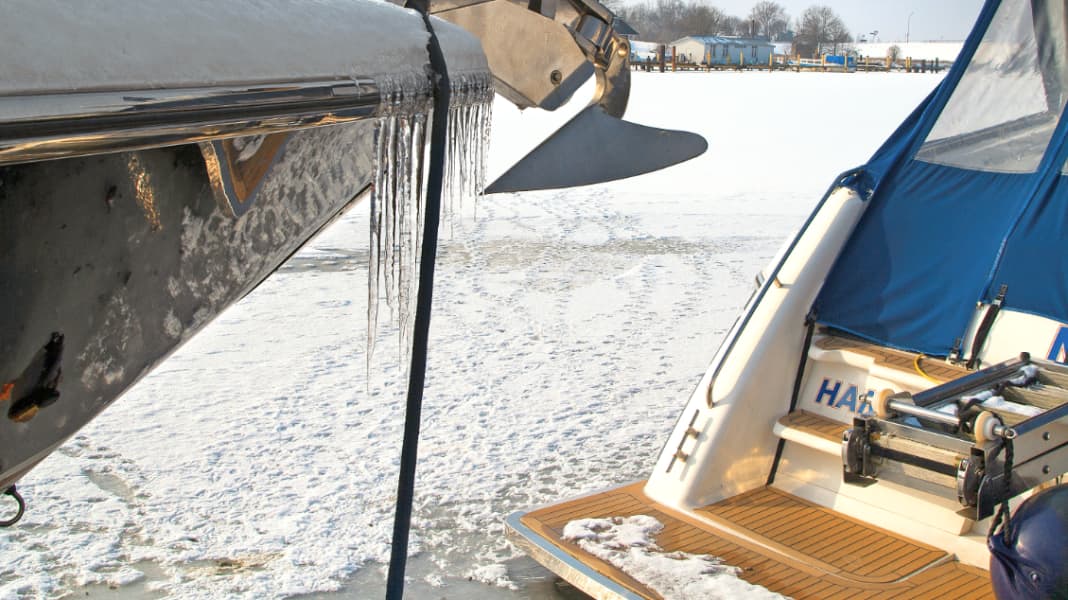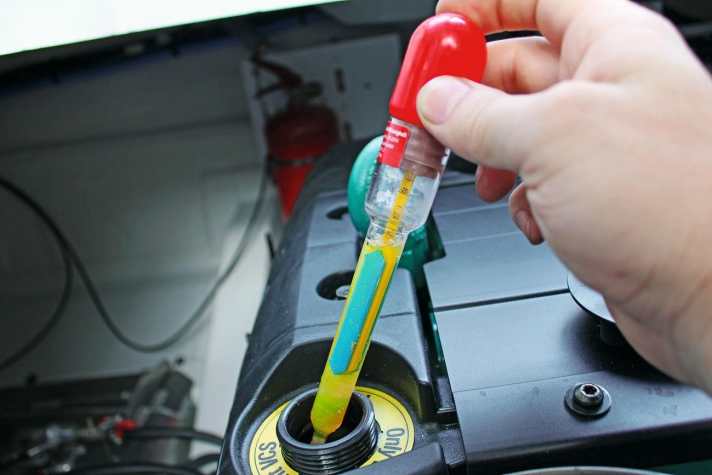
"Somehow we must have been sloppy when clearing out the ship in autumn," is the comment from the galley. A bottle of mineral water had been left behind in the locker - and now, at 15 degrees below zero in winter, it had burst. An impressive example of how important it is to winterise the boat properly and make it "frost-proof".

When water freezes, it expands. A truism. More precisely, water increases in volume by up to ten per cent when it freezes. If it is in a closed space, such as a container or tank, it develops considerable pressure on the outer walls.
At low temperatures, water needs space to expand. If not to the side, then at least diagonally upwards. This is also the reason why gutters in northern Europe are semi-circular.
If they were rectangular, as in the Mediterranean region, then plumbers in this country would have a lot more to do. However, structural measures cannot always provide a remedy. This is why frost is the third major enemy of marine engines alongside corrosion and wear.
"You have to put antifreeze in all the pipes so that it doesn't freeze in winter," the novice is told as good advice when winterising the boat for the first time, "After all, it's the alcohol in it that keeps it frost-free." After all, the pungent, sweet smell of alcohol also stings your nose when you turn on the windscreen wipers in your car.
But could I also use windscreen washer fluid to winterise my drinking water tank, for example? Many boat owners stand in the DIY store every autumn and ask themselves about the differences in the brightly coloured liquids. Doesn't it matter what I use as long as it contains enough alcohol?
Not at all. This is because antifreeze is not only intended to protect against frost, and the various agents have significant differences in their properties. If used incorrectly, the ship can suffer serious damage and, in the worst case, even sink.
